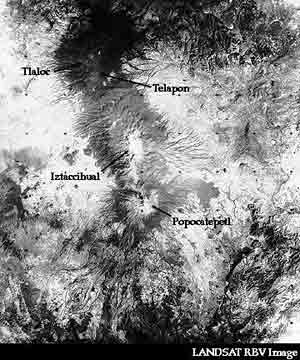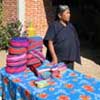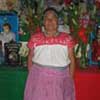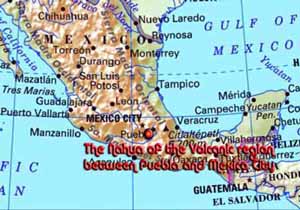 |
 |
 |
 |
|
||||||||||
|
Nahua of Popocatepetl
No where in Mexico are the indigenous Nahua peoples under more pressure from modernism than in the arch of villages that surround the volcanic range to the east of Mexico City. In this gallery, I have grouped together towns that are in eye shot of the volcanoes, they are all Nahua people. This unscientific classification actually works well since the different indigenous areas gradually shrink and the pool of indigenous speakers gets smaller and smaller. It is not customary to divide the Nahua into this regional group; however in the "here and now" they exist separately from other Nahua areas. The town of Tlalnepantla is a classic case where only a 107 year old woman has the last vestiges of traditional clothing in town to the town of Magdelena, where the textile tradition is very strong. Popocatepetl (17797 feet) and Iztaccihuatl (17154 ft) are the enormous volcanoes that form the eastern rim around Mexico City. These volcanoes are considered sacred and there are many legends about them. The volcanoes are so large that they border four states Morelos, Mexico, Puebla and Tlaxcala and over looks the Mexican capital. On both sides of the volcanoes there are still many villages that retain some of the Nahua language and many of the customs. The history of the Nahua people in this area is complicated as many different groups rambled into this region; all eventually came under the domination of the "Aztec Empire". From this region, people migrated to the Nahua areas of the State of Guerrero, or were part of the Aztec armies that over ran the south of Puebla and north of Guerrero. Today, many towns still have a strong cultural tie to their Nahua roots but language and textiles are only used by the grandmothers. In town after town people lament the loss of culture and language but little can be done to stop the gradual erosion that began with the conquest 500 years ago. The festival in Tlaxcalancingo, shown in this gallery, called Xochipitzahuac is a reminder that this endangered culture can make a stand against modernism. |
||||||||||
 |
||||||||||
|
||||||||||










